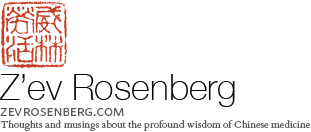I am presently working my way through “Pulse Diagnosis in Early Chinese Medicine: The Telling Touch”, (Cambridge University Press, 2110) a translation and commentary of Chunyu Yi’s Memoir with twenty-five case histories. The translator is Elisabeth Hsu, one of our most prominent medical anthropologists, who researched and worked on this text over two decades What is interesting about this text is that as an early Han dynasty text, it focuses on synchronicity between phenomena occurring in the body and emotions and the macrocosm of the greater environment. Dr. Yi diagnoses primarily by palpating the vessels, and in his medical universe, the zang/viscera are not primarily physiological entities, but depots containing emotions and qi. He focuses on visceral qi and its specific qualities (color, scent, season, pulse image), and the primary disease factors are imbalanced emotions. This is what Elisabeth Hsu calls the ‘sentimental body’, where specific emotions reside in a somatic structure of the five zang/yin viscera.
It is quite an experience to look beyond the veil of Aristotelian causation (finding past factors that contribute to present illness) into an entirely synchronous world view without past or future, but an eternal present. I think studying such texts opens one up to a world view that we’ve largely forgotten, but is essential in order to understand how the Han dynasty Chinese physicians viewed their world and their patients. It raises many questions about what we understand to be Chinese medicine, and how much we’ve been influenced by relatively modern conceptions of reality in that understanding.


Could you say more about no past or future, just an eternal present. All things are acting in the moment, jet the future and past have very different effects on the present.
Todd,
It is true, the past and future have different ‘effects’ on the present moment. They are a continuum, flowing into each other dynamically. The important question is how this effects our diagnosis and treatment, and there is a great deal of material in the Chinese classical medical literature, specifically Han dynasty, on this. I’d love to answer the question in depth, but it may require another article to do so.